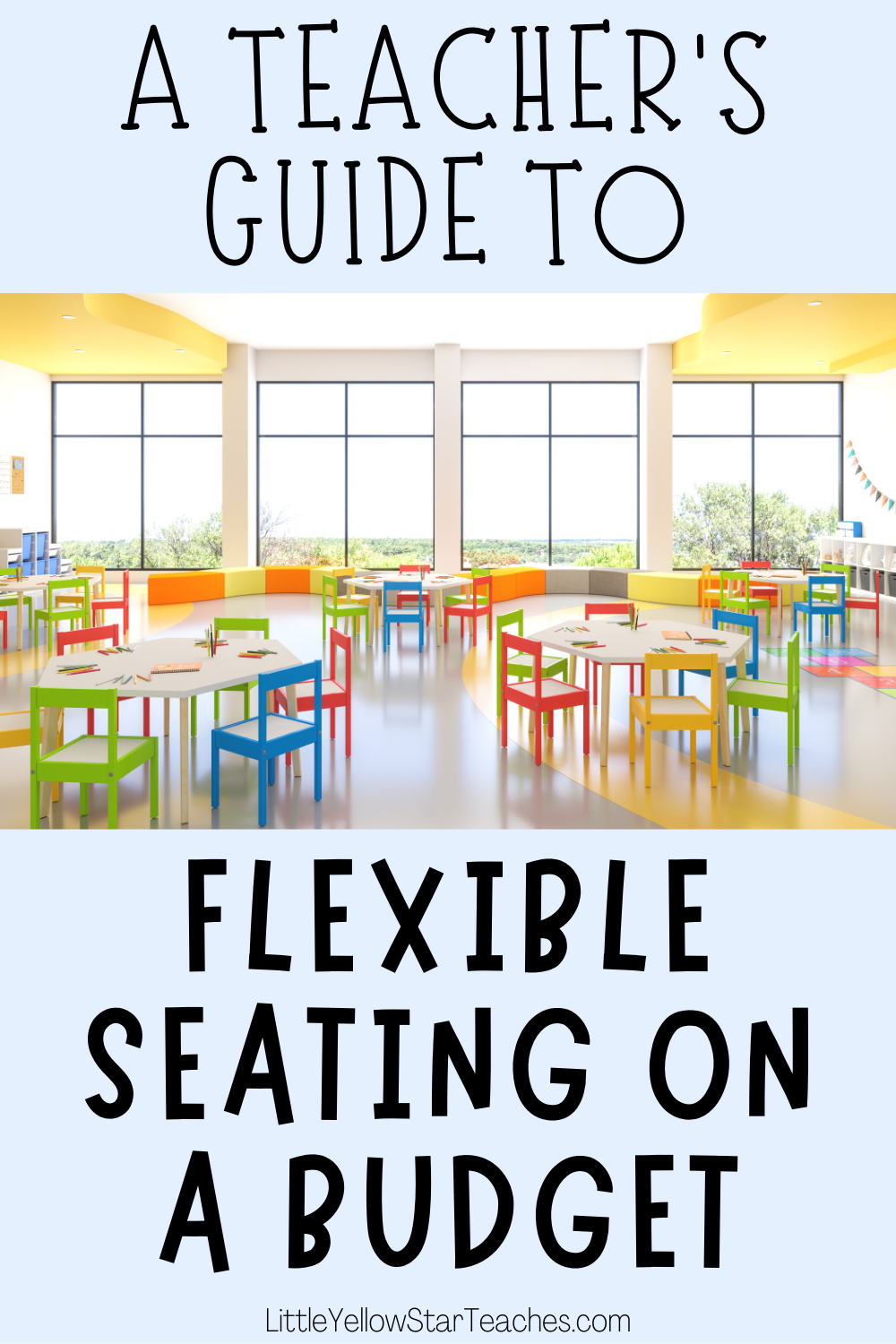As an educator, you probably have noticed how your students can’t seem to stay put in their traditional desks. Well, there’s something to be said about that – and it’s not that they’re simply restless.
Instead, we’re finding that flexible seating is a more natural fit for many of our kiddos. Flexible seating allows us to create a comfortable and dynamic learning environment which is crucial for our students’ success. However, implementing flexible seating in the classroom can often come with a hefty price tag.
As someone who has experimented with different types of flexible seating, I’m here to share some of my tips on how you can accommodate flexible seating in the classroom without breaking the bank! We will explore some creative and budget-friendly ways to bring flexible seating to your classroom.
Let’s get started!
Understanding the Concept of Flexible Seating
Before we dive right in, let’s talk about what flexible seating is and why you really don’t need a Pinterest-ready classroom to reap the benefits. If you want to learn more about What Flexible Seating is and a quick 4 steps to implement it, you can check out a more indept post here.
Flexible seating is about providing different types of seating options (think yoga balls, bean bags, or comfy rugs), which allow our students to choose where and how they work best. The best part is the research backing this up, showing that kids can focus better and are more engaged when they have some freedom to move.
Providing different flexible seating options can look very different in different schools and classrooms. You don’t need to spend thousands of dollars to be able to provide your students with flexible seating options. But, of course, if you have the budget, why not?!?
The true concept is providing other seating options and the autonomy for students to choose their seating position. As long as you are fulfilling that, you are implementing flexible seating!

7 Strategies for Implementing Flexible Seating on a Budget
Here, let me walk you through different options that you might not have considered. Some I didn’t even know about until I was brave enough to ask my principal at the school was working at.
#1: District Furniture Warehouse
If you work for a school district, you need to ask your principal about getting permission to go look at the district furniture warehouse. Yes! Many school districts have warehouses to store unused items, such as unused furniture. This furniture came from all the different schools in your district, and there are many hidden gems. You will be surprised by what you might find there!
#2: Re-purpose Existing Furniture
Take a look around your classroom and see if there are any existing furniture items that can be re-purposed as flexible seating options. For example, you can use storage cubes as stools or stackable crates as bookshelves and seating. This not only saves you money but also reduces waste and promotes sustainability in the classroom.
#3: DIY Your Own Seating Options
Another budget-friendly option is to create your own seating options using inexpensive materials like pillows, cushions, and PVC pipes. For example, you can create floor seating using large pillows or create standing desks using PVC pipes and an adjustable height table. Use your imagination and get creative!
Check Out Rainbow Mindfulness Books and More!
#4: Crowdsource Donations
Consider reaching out to parents, community members, and local businesses to see if they have any furniture or supplies that they would be willing to donate to your classroom. Let your community know that you are trying to add flexible seating options in your classroom. You might be surprised by the response!
Apart from that, create a wish list of items you need and share it with your network. You can also use online fundraising platforms like DonorsChoose to raise money for flexible seating options.
#5: Rotation Implementation
You do not need to have a class set of flexible seating options!
Not every student needs to have every option available at all times. You could implement a rotation system, where students get to choose their seating for a week or a day before rotating to ensure everyone gets a turn. Come up with a rotation schedule, you can do it as part of your reward system or rotate by table groups.
#6: Look for Deals and Discounts
The first step in implementing flexible seating on a budget is to look for deals and discounts on furniture and supplies. Check out local garage sales, thrift stores, and online marketplaces like Facebook Marketplace, Craigslist, and LetGo. You can also visit discount stores like Dollar Tree or Five Below for affordable storage solutions and other classroom essentials.
#7: Prioritize Your Spending
Finally, it’s important to prioritize your spending when it comes to flexible seating. Focus on the seating options that will have the biggest impact on your student’s learning and well-being, such as standing desks, stability balls, and floor cushions. Gradually add additional seating options as your budget allows.
Tips for Sustaining and Maximizing Flexible Seating
One important tip is to teach and encourage responsibility and care. If students are part of creating their flexible seating, they’ll be more likely to look after their surroundings. Have an accountability plan, or send an accountability letter home. Understand that accidents happen, but purposely destroying a piece of furniture is a no-go.
Maintenance is key too. Regular cleaning, minor repairs, and smart storage can ensure the longevity of your items. And let’s not forget that a well-cared-for space is a more inviting space for learning.
Conclusion:
In wrapping up, let’s remember that creating a flexible seating environment is an adventure. It’s about learning, adapting, and finding creative ways to promote student comfort and engagement. We, as educators, can make a huge difference in our classrooms without draining our bank accounts. Flexible seating doesn’t have to be expensive or extravagant, and with a little creativity and resourcefulness, we can create an environment that our students will love and that will, in turn, help them to love learning. Don’t forget, the journey to flexible seating is just that, a journey. It’s not about the destination or getting there overnight but about learning and growing along the way. Go ahead, embrace the journey!
Bye for now!
Prima from LittleYellowStar
* * *









